Ducks Unlimited works with partners to implement and manage restoration projects in the Mississippi River Basin for water, wildlife habitat, and communities.
For centuries, the Mississippi River has powered economies, supported communities, and shaped cultures across the U.S. Once surrounded by vast wetlands and floodplains, today over half of that natural buffer is gone, replaced by development, agriculture, and mounting climate pressures.
The river is one of the most important waterways in the world—but it’s also one of the most threatened. Flooding is more destructive, water quality is declining, and vital habitats are disappearing.
Ducks Unlimited’s (DU) Mississippi River Resilience Program is restoring the lands that protect this iconic river, from its northern headwaters to the southern Delta. Through large-scale conservation, we’re helping to secure clean water, healthy wildlife, and resilient communities across the basin. Since 1984, DU has conserved over 7.5 million acres in the Mississippi River Basin alone, increasing our impact in the basin by an average of 12% annually over the past decade.
With a goal of conserving 1 million acres annually, DU is building a stronger, more sustainable future for one of America’s greatest natural treasures.
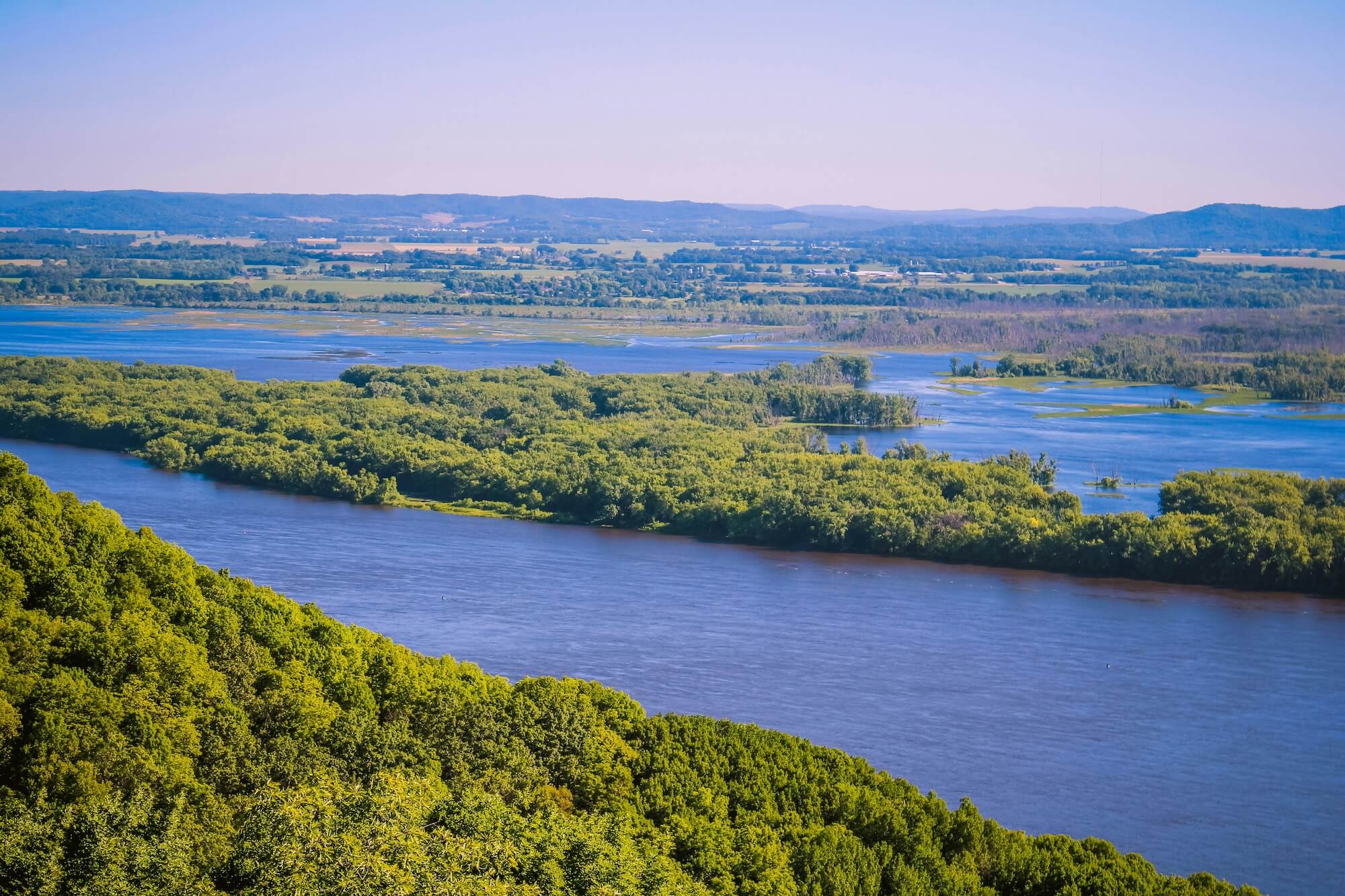
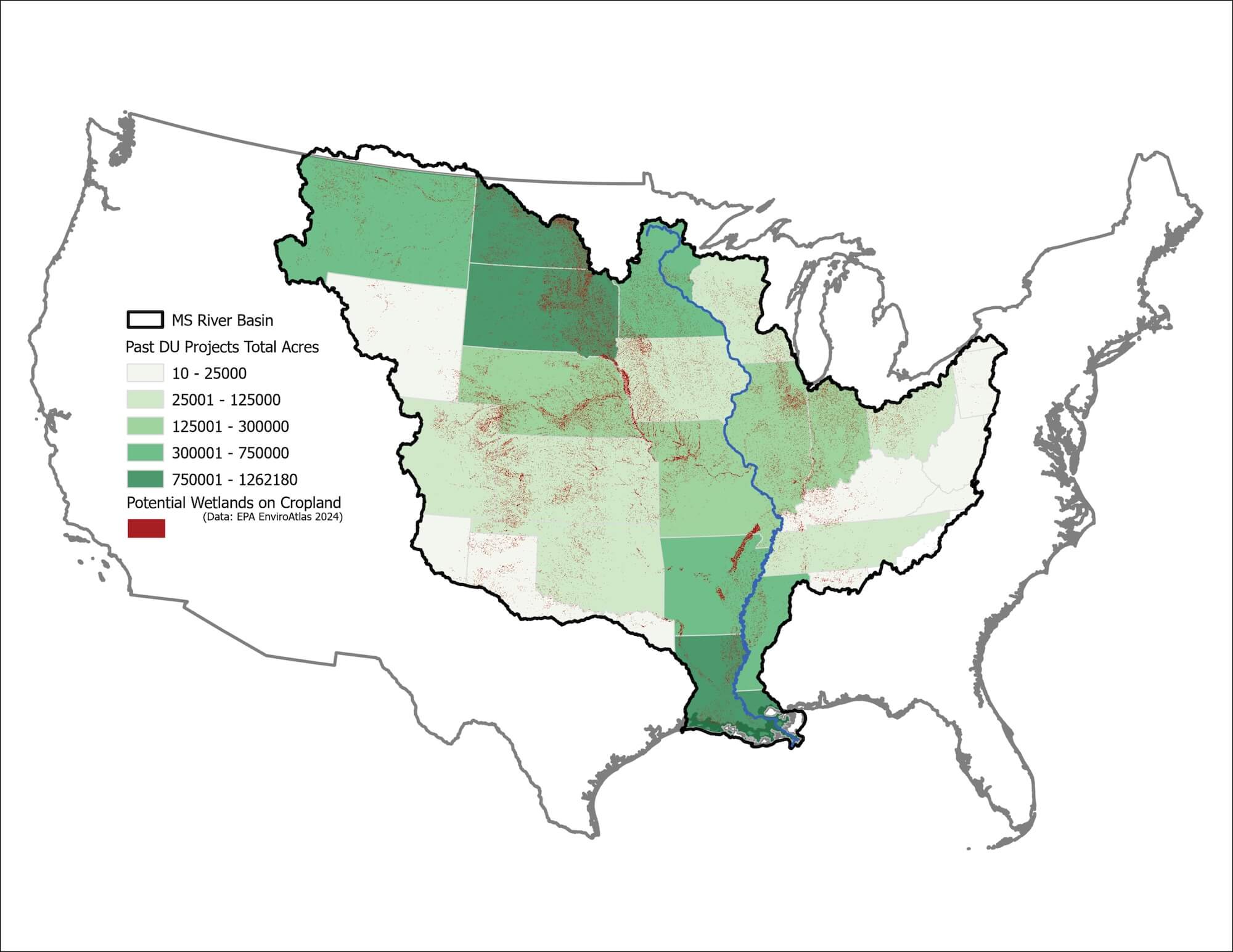
Once rich with wetlands, grasslands, and forests, the Mississippi River Basin has lost:
These losses lead to more severe flooding, declining water quality, and shrinking habitat for wildlife. Communities across the basin are paying the price—with damaged homes, strained water systems, and threatened livelihoods.
SOLUTION: DU restores wetlands and floodplains to naturally reduce flood risks, protect communities and improve water management across the Mississippi River Basin.
SOLUTION: By restoring wetlands, planting stream buffers and supporting producers with practices like cover crops and precision nutrient management, we are helping to reduce nutrient runoff and improve water quality and soil health.
SOLUTION: We address groundwater depletion by partnering with landowners to improve irrigation efficiency, reuse water, and restore wetlands that naturally recharge aquifers.
SOLUTION: We work across the Mississippi River Basin to restore and protect native habitats to support biodiversity, sustain wildlife, and maintain the ecological health of watersheds.
SOLUTION: DU conserves and enhances habitats that support outdoor recreation and rural economies, boosting access, traditions and the support needed to scale conservation across the basin.
SOLUTION: DU restores coastal ecosystems in the Mississippi River Delta to reduce flood risk, buffer storm surges, and sustain fisheries and working coastlines—protecting communities, economies and natural resources from accelerating climate threats.
Ducks Unlimited has spent nearly a century forging cross-sector partnerships to deliver practical, science-based solutions at scale with state or federal agencies, private industries, agricultural producers, municipalities, corporations, nonprofits, and private landowners. Our partnership model helps us leverage our supporters' hard-earned dollars with funds from a myriad of sources and maximizes different capabilities and talents to achieve truly exceptional results.
Built on trust, technical expertise, and voluntary collaboration, DU’s approach helps partners translate conservation goals into lasting, on-the-ground outcomes. Whether we are restoring fish and wildlife habitat on publicly owned lands, co-designing natural infrastructure with municipalities to address flooding or working hand-in-hand with farmers, our success depends on relationships – especially in the basin where over 80% of the land is privately owned and much of it is in agricultural production.
To learn more about the program or how to get involved, email ecosystemservices@ducks.org
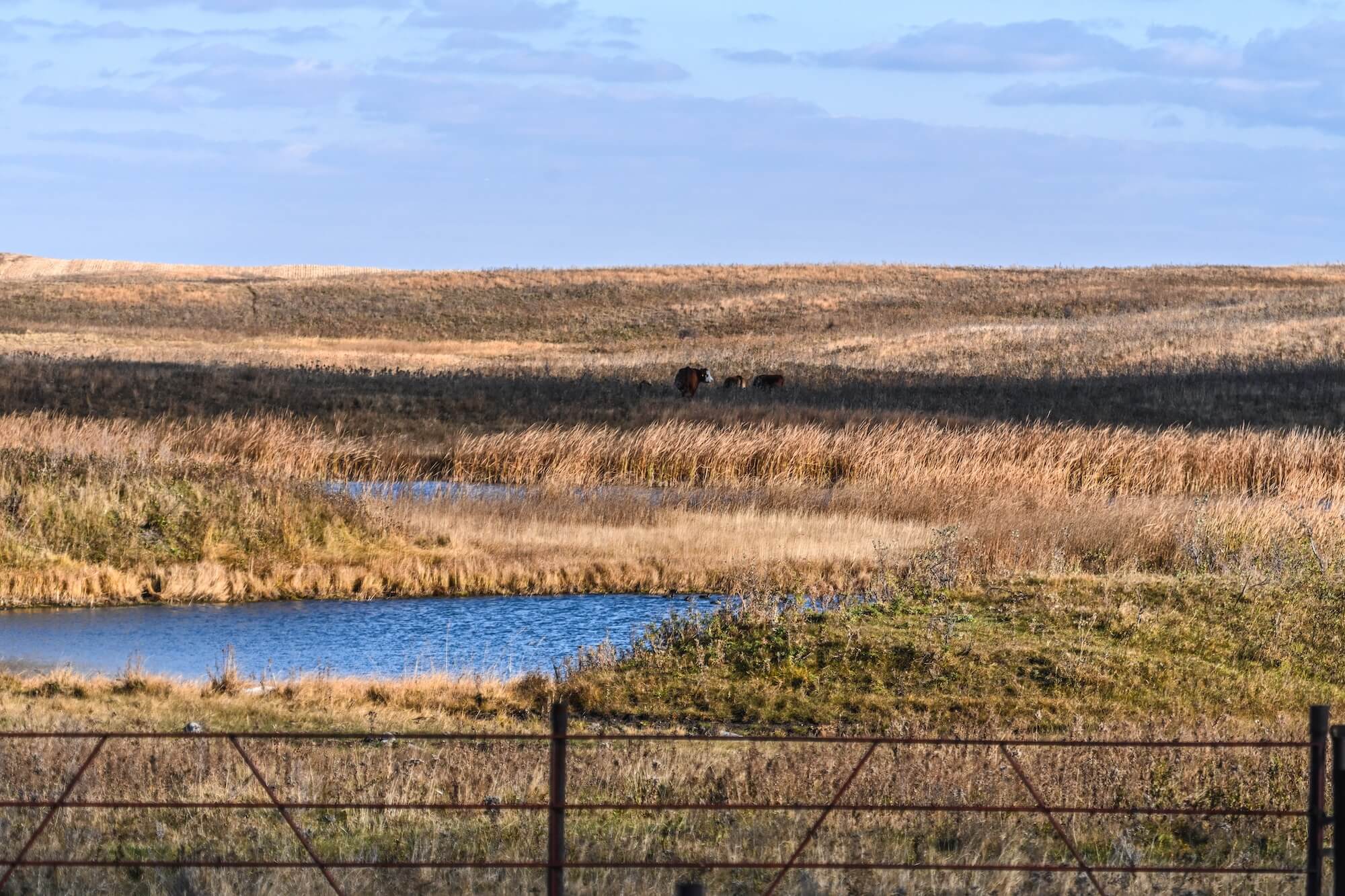
Project Purpose: Native Habitat Restoration & Biodiversity
Co-Benefits: Flood Risk Reduction, Nutrient Pollution Reduction
In the headwaters of the Mississippi River, Minnesota’s prairie and grassland landscapes have lost thousands of small, seasonal wetlands due to decades of agricultural drainage. These wetlands once played a vital role in filtering runoff, supporting waterfowl, and reducing flood risks.
Today, underground tile systems designed to improve crop production rapidly move water off fields, carrying excess nitrogen and phosphorus into nearby streams. This nutrient-rich runoff flows downstream, contributing to hypoxia in the Gulf and threatening drinking water quality along the way. To address this, DU and the United States Fish and Wildlife Service are restoring wetlands on high-priority waterfowl production areas by locating and removing drainage tile to reestablish natural hydrology. Since 2021, this partnership has restored or enhanced more than 560 wetlands, blending state and federal funding to deliver lasting ecological benefits across western Minnesota.
Partners: US Fish and Wildlife Service, Outdoor Heritage Fund, Minnesota Department of Natural Resources, Bame Foundation, Strehlow Family Fund, Flint Hills Resources
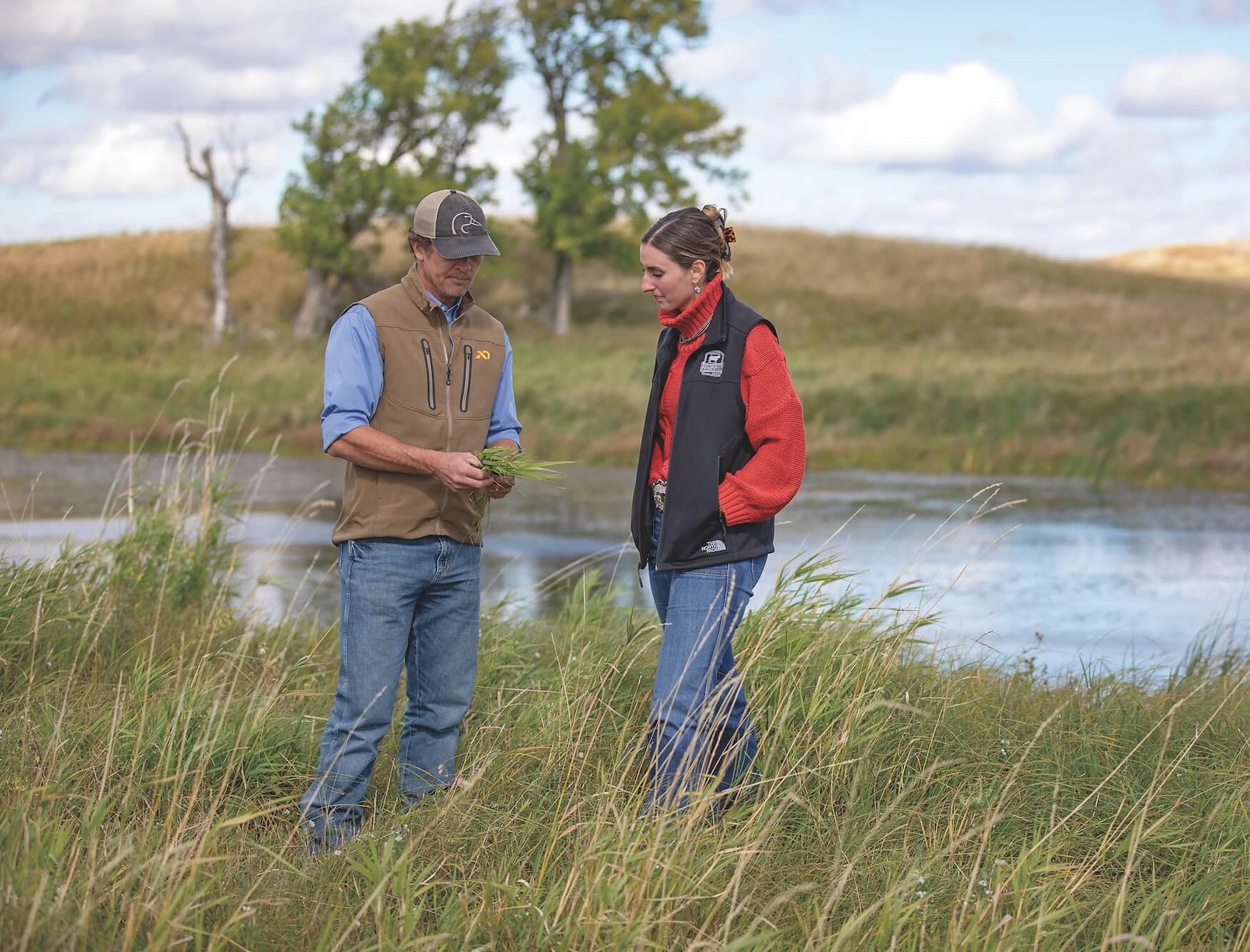
Project Purpose: Native Habitat Restoration & Biodiversity
Co-Benefits: Nutrient Pollution Reduction, Carbon Sequestration
Grass-based agriculture is well-suited to the soil types and terrain of South Dakota and can serve as an effective alternative for managing marginal soils. With the up-front cost share and technical assistance provided in this partnership, a productive mosaic of cash crops, forage crops, grasslands, wetlands, and livestock are possible.
Participating landowners can expect to transition marginal cropland soils to healthy grasslands, improve water quality and soil health, and enhance habitat for grassland birds. Furthermore, livestock operations will financially benefit from improved program practices.
Partners: U.S. Department of Agriculture, Bush Foundation
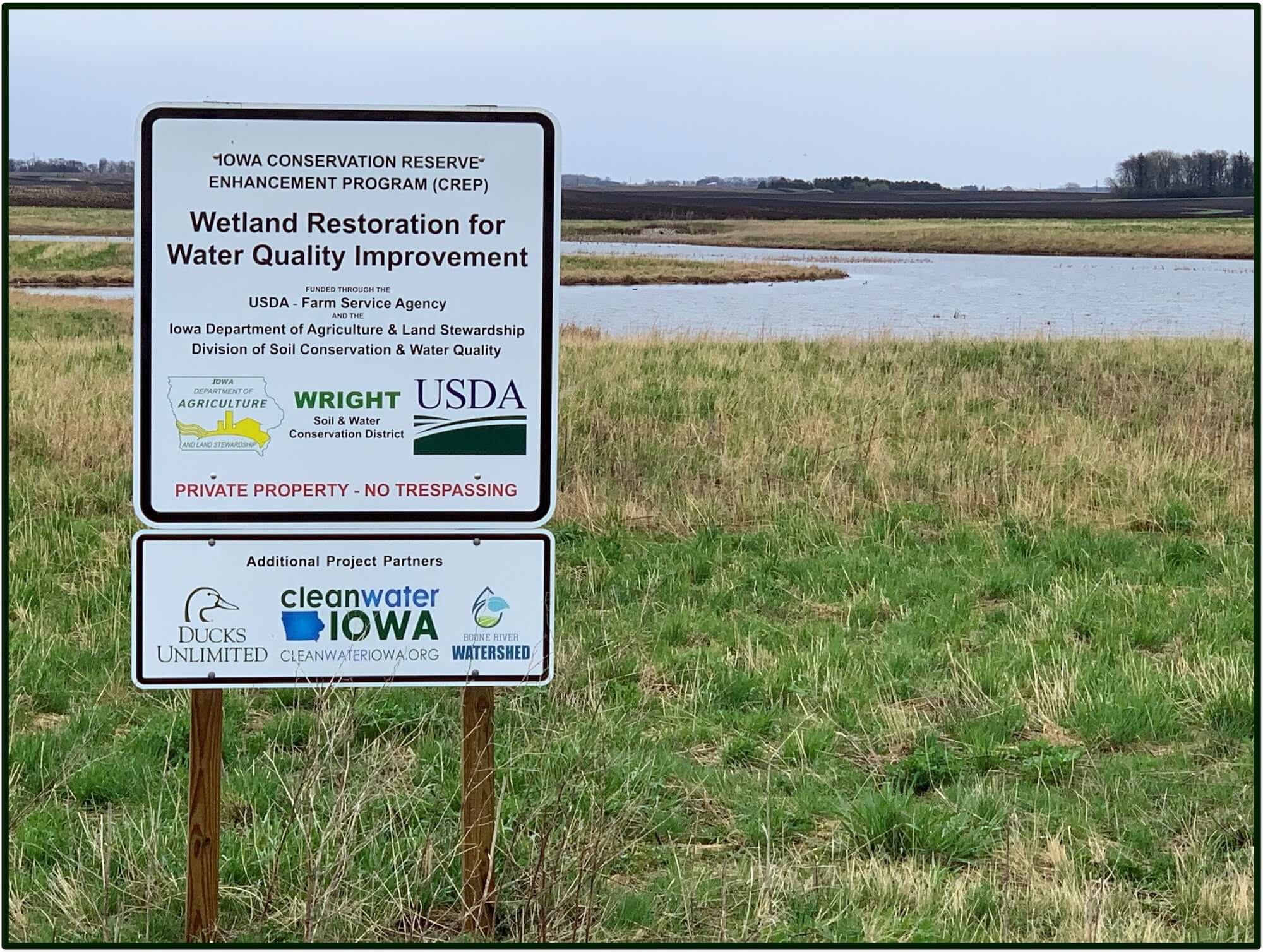
Project Purpose: Nutrient Pollution Reduction
Co-Benefits: Native Habitat Restoration & Biodiversity, Flood Risk Reduction
Agricultural landscapes play a vital role in the Mississippi River Basin, supporting local economies and global food systems. These working lands also present opportunities to integrate smart conservation practices. For example, tile drainage—commonly used to improve field conditions—can unintentionally carry excess nutrients into nearby waterways. This contributes to broader challenges such as nutrient loading in the Mississippi River Delta and The Gulf, where it can lead to hypoxic zones that impact marine life.
Closer to home, elevated nitrogen levels in drinking water sources can pose health risks to rural communities. Through this project, we are working to identify solutions that support both agricultural productivity and long-term environmental health.
Through our partnership with the Iowa Department of Agriculture and Land Stewardship (IDALS), DU is working directly with farmers to integrate wetlands into tile-drained agricultural fields. These wetlands help treat nitrogen- and phosphorus-rich runoff before they reach major waterways. DU provides technical expertise, design support, and financial assistance, making it easier for producers to implement conservation practices that benefit both their operations and the environment.
Partners: IDALS, Microsoft, Nestle Purina Petcare
.jpg)
Project Purpose: Nutrient Pollution Reduction
Co-Benefits: Flood Risk Reduction
Scott County, Iowa, is a microcosm of the issues that plague many Mississippi River Basin states. Agricultural runoff and frequent flooding in the Quad Cities area of Iowa contribute to nutrient pollution and water quality degradation, threatening local ecosystems, wildlife habitat, and community resilience. Through the Scott County Iowa Working Lands for Resilient Communities program, DU is implementing proven agricultural conservation practices.
These conservation practices include in-field and edge-of-field wetland restoration, cover crops, and saturated buffers, that help capture floodwaters, reduce nutrient runoff, and strengthen agricultural producers’ bottom lines.
DDU is collaborating with local farmers and landowners to drive voluntary, incentive-based conservation on working agricultural lands by implementing on-farm best management practices that improve water quality and resiliency across the Mississippi River Basin while supporting the agricultural community. We are also partnering with local conservation organizations and universities to measure the impacts of these practices and demonstrate their effectiveness. Building on the success of this initiative, DU is exploring opportunities to replicate this model in other priority watersheds across the basin.
Partners: Partners of Scott County Watershed, Iowa State University, Iowa Department of Agriculture and Land Stewardship, Mississippi River Cities and Towns Initiative, National Pork Board, Trust in Food, United States Department of Agriculture
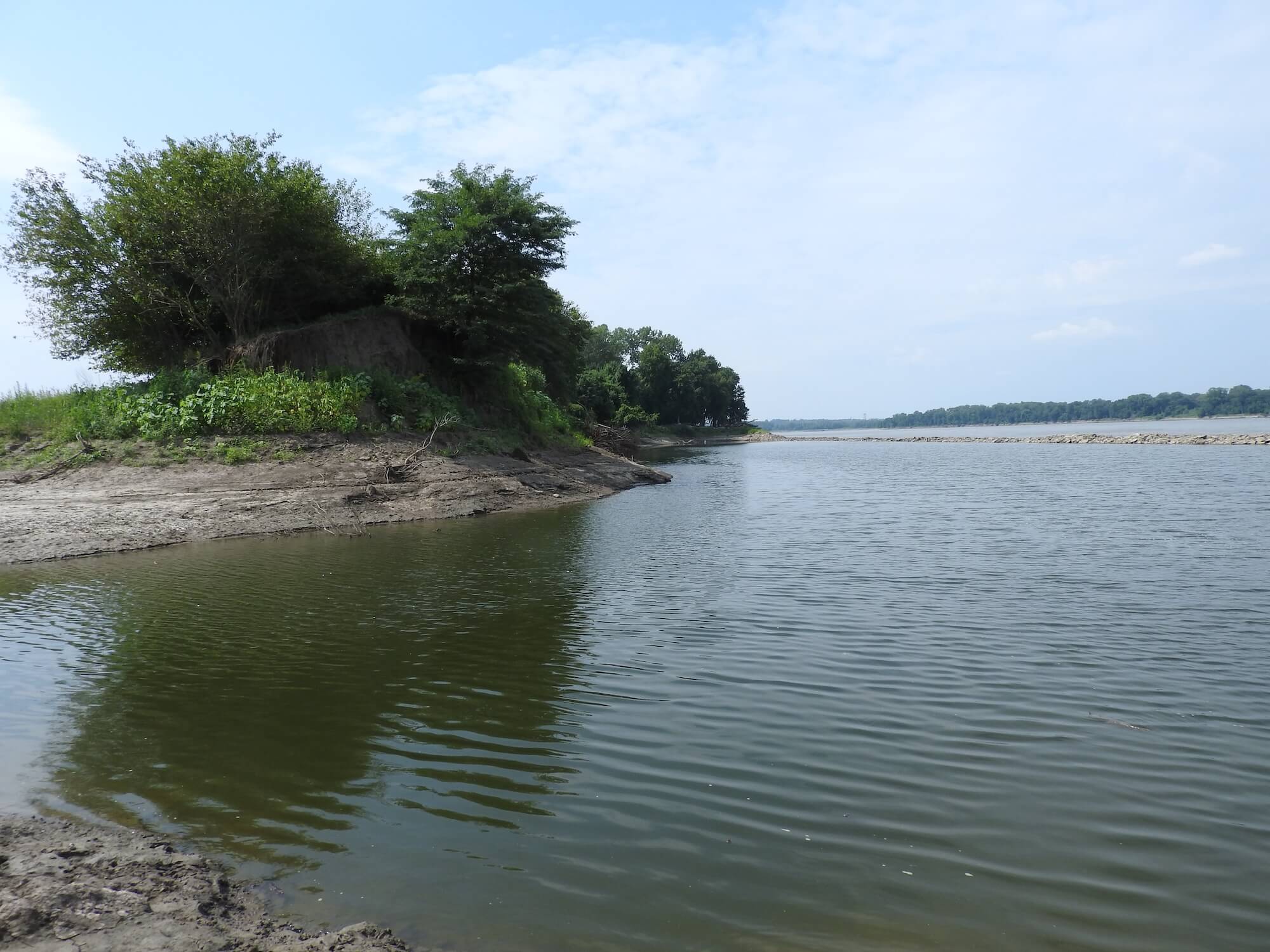
Project Purpose: Flood Risk Reduction
Co-Benefits: Outdoor Recreation Access and Tourism, Native Habitat Restoration
In the Metro East region of Illinois, just across the Mississippi River from St. Louis, Missouri, approximately 17,000 acres of local municipal stormwater drains into Horseshoe Lake. During storm events, this water backs up into the lake, resulting in stormwater flooding in surrounding communities. Over time, sediment carried from neighboring areas and farmland has reduced the lake’s capacity to store floodwaters.
Following major flooding events in the St. Louis region, the City of East St. Louis prioritized wetlands restoration to better manage backwater flooding. The city, DU, and partners secured funding for advanced hydrologic restoration efforts at and around Horseshoe Lake.
This project restored nearly 700 acres of floodplain wetland and bottomland hardwood to improve Horseshoe Lake State Park’s ability to store water during floods and intense rain events, manage quality wildlife habitat under future site conditions, and increase and improve public recreational opportunities.
Partners: City of East St. Louis, Federal Emergency Management Agency (FEMA), Illinois Department of Natural Resources, Illinois State Habitat Stamp, Illinois State Waterfowl Stamp, Mississippi River Cities and Town Initiative, Office of Senator Dick Durbin (IL), Phillips 66, Enbridge Energy, American Water Charitable Foundation
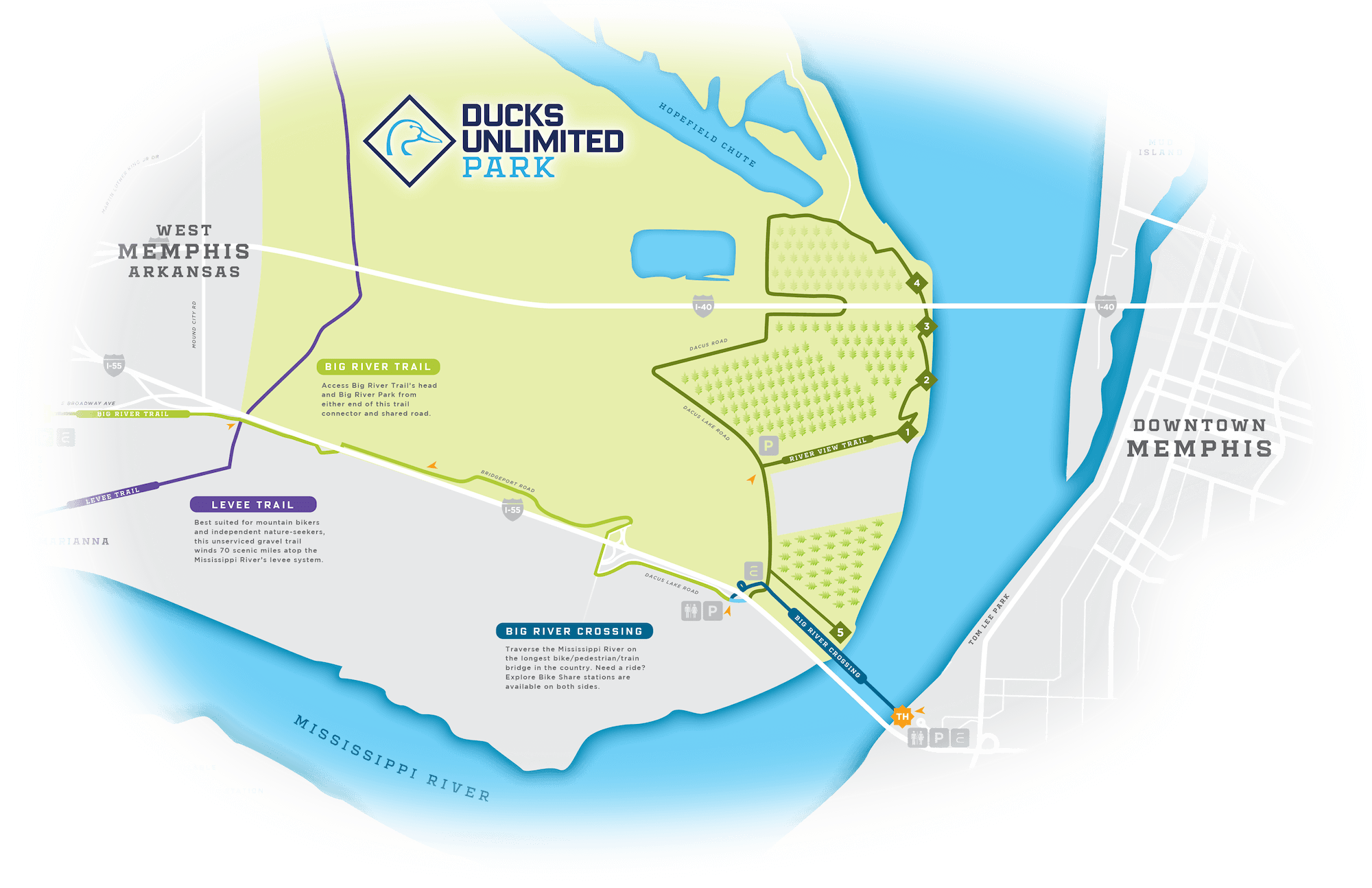
Project Purpose: Outdoor Recreation Access and Tourism
Co-Benefits: Native Habitat Restoration & Biodiversity, Nutrient Pollution Reduction
Located along a highly visible stretch of the Mississippi River across from downtown Memphis, Tennessee, the site of Ducks Unlimited Park has experienced years of habitat degradation and disconnection from the river’s natural hydrology. These impacts reduce the land’s ability to store floodwaters, filter runoff, and support wildlife, diminishing local ecosystem function and community resilience.
DU is restoring 1,500 acres of floodplain by reestablishing native vegetation and restoring functional bottomland and hardwood wetlands. These conservation actions are paramount to the area’s wildlife, water quality, and ecosystem health. The site serves as a hub for outdoor recreation and eco-tourism. The land, trails, and park amenities are permanently protected with a conservation easement and have an endowment to sustain park operations now and in the future.
Partners: Big River Park Conservancy, First Horizon, Ingram Barge, Nestle Purina PetCare, NextEra Energy, Nucor Steel, TennGreen, Walton Family Foundation, and others
Project Purpose: Nutrient Pollution Reduction
Co-Benefits: Groundwater Depletion Reduction
Rice farming in the Mississippi Alluvial Valley faces increasing challenges due to shifting agricultural practices, input costs, and market dynamics. DU’s Rice Stewardship Program is a unique partnership with the US Rice Federation that allows us to work directly with rice producers to implement conservation practices that optimize water use and nutrient use efficiency and enhance agricultural sustainability.
Through technical expertise and financial incentives, DU helps farmers integrate activities such as efficient irrigation, precision nutrient management, winter water holding. By shifting water reliance from aquifers to surface sources, this program strengthens long-term water security, supports natural nutrient cycling, and strengthens resilience across agricultural landscapes in the Mississippi River Basin.
Partners: Walmart Foundation, Mosaic Foundation for Sustainable Food Systems, Chevron, Nestle Purina, US Department of Agriculture – Natural Resources Conservation Service, National Fish and Wildlife Foundation, and others
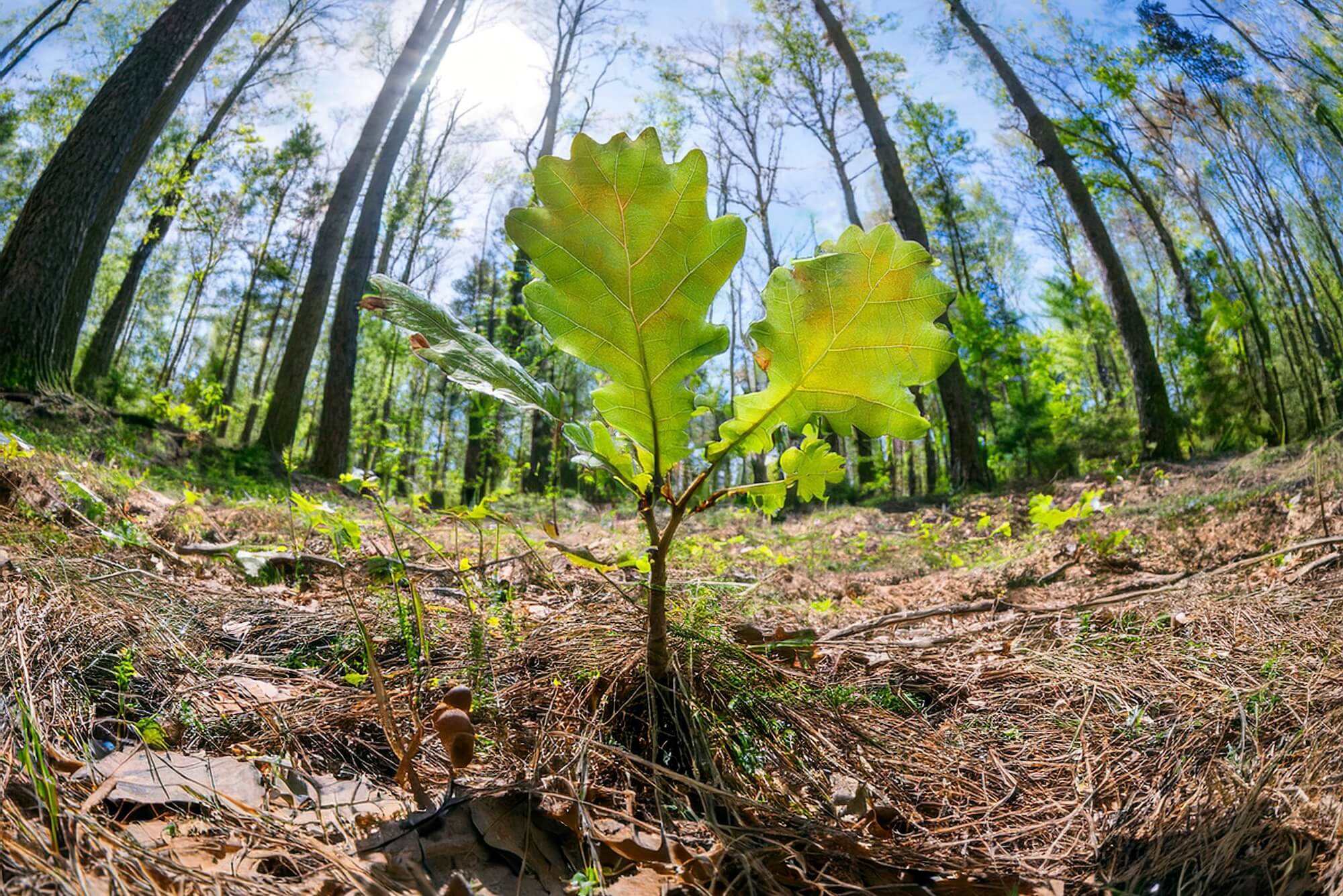
Project Purpose: Carbon Sequestration
Co-Benefits: Native Habitat Restoration & Biodiversity
Widespread deforestation and habitat loss in the Lower Mississippi River Valley have reduced biodiversity, diminished natural flood storage capacity, and weakened ecosystem function across the region, creating ripples that extend throughout the Mississippi River system. These landscape-scale changes contribute to increased flooding, degraded water quality, and loss of critical habitat for waterfowl and wildlife.
DU’s Flyway Forests program addresses these challenges by restoring bottomland hardwood forests and wildlife habitat on private lands in the Lower Mississippi River Valley, its tributaries and adjacent counties. Through a public-private partnership model, DU works with landowners to design and implement reforestation projects that restore native species, strengthen landscape resilience, and create access to emerging ecosystem markets. DU is actively seeking additional partners to help expand this scalable model across other priority areas in the Mississippi River Basin, increasing habitat restoration and ecosystem resilience at scale.
Partners: Land and Water Co., Farm Journal, LandOption, Trust in Food, Private Landowners
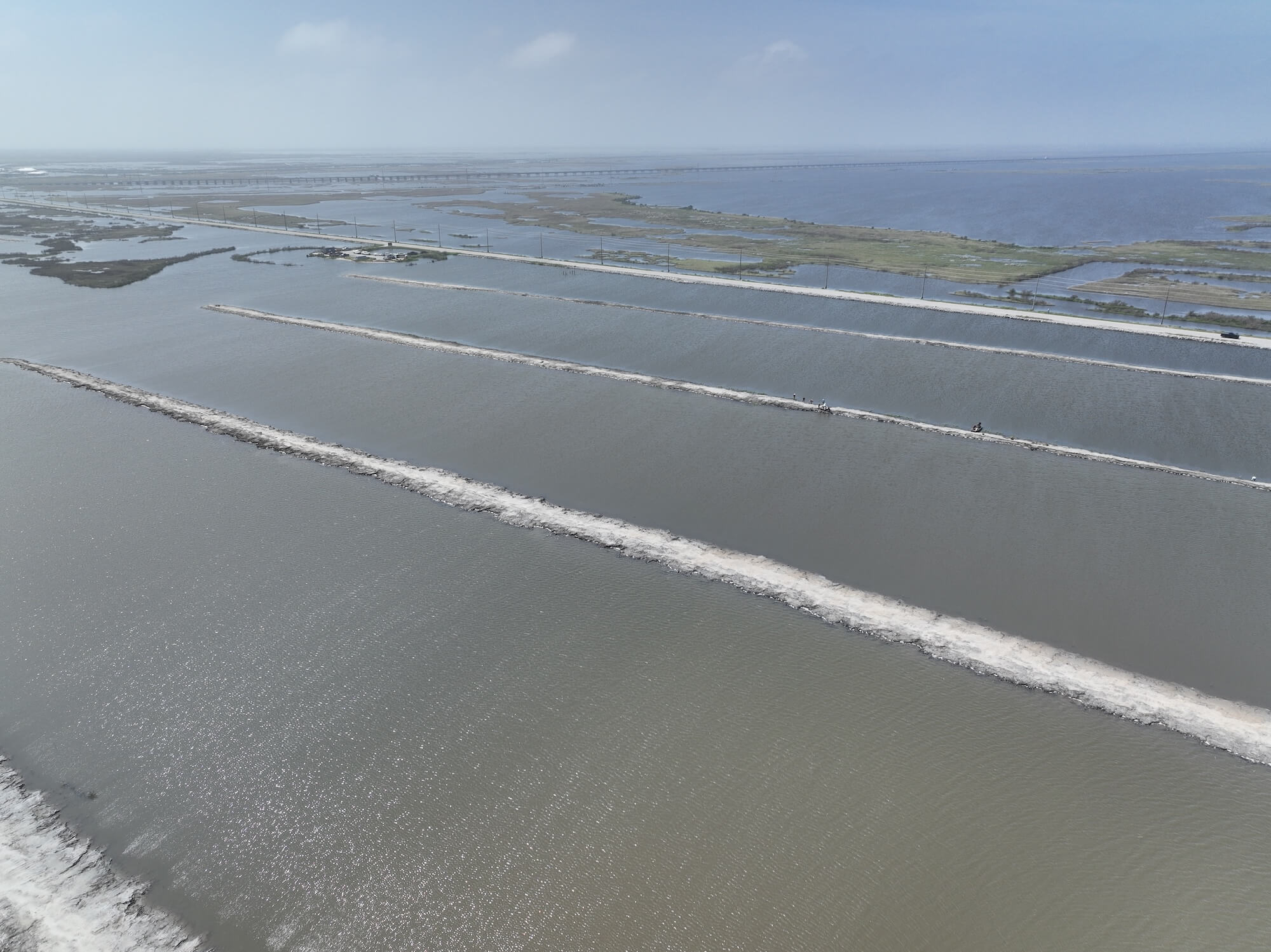
Project Purpose: Coastal Resilience
Co-Benefits: Native Habitat Restoration & Biodiversity
High rates of erosion and land subsidence along Louisiana’s coast threaten vital ecosystems, infrastructure, and communities. In the area between Port Fourchon and the Gulf—home to Louisiana’s largest industrial and recreational hub—these coastal changes increase vulnerability to storm surge, degrade water quality, and diminish habitat.
DU’s Port Fourchon Terracing and Living Shoreline project restores over 1,200 acres of coastal marsh using 195,700 linear feet of earthen terraces and 4,070 linear feet of living shoreline. Terracing is effective at reducing wave energy, thereby increasing water quality through reduced turbidity, which allows sunlight to encourage submerged aquatic vegetation to grow. This vegetation then provides habitat for fish and other wildlife. This effort will buffer storm impacts, enhance habitat, and protect critical infrastructure, including the Louisiana Offshore Oil Port, the South Lafourche Levee System, and Highway 1 – the sole hurricane evacuation route from Grand Isle.
Partners: Coca-Cola Foundation, ConocoPhillips, National Fish and Wildlife Foundation, National Oceanic and Atmospheric Administration, Port Fourchon, Ed Wisner Trust, Chevron, Louisiana Department of Wildlife and Fisheries, Louisiana Offshore Oil Port, Coastal Protection and Restoration Authority, Shell, US Fish and Wildlife Service, Cox Communications, Restore or Retreat, North American Wetlands Conservation Act, Lafourche Parish Government, Woodside Energy
Ducks Unlimited uses cookies to enhance your browsing experience, optimize site functionality, analyze traffic, and deliver personalized advertising through third parties. By continuing to use this site, you agree to our use of cookies. View Privacy Policy